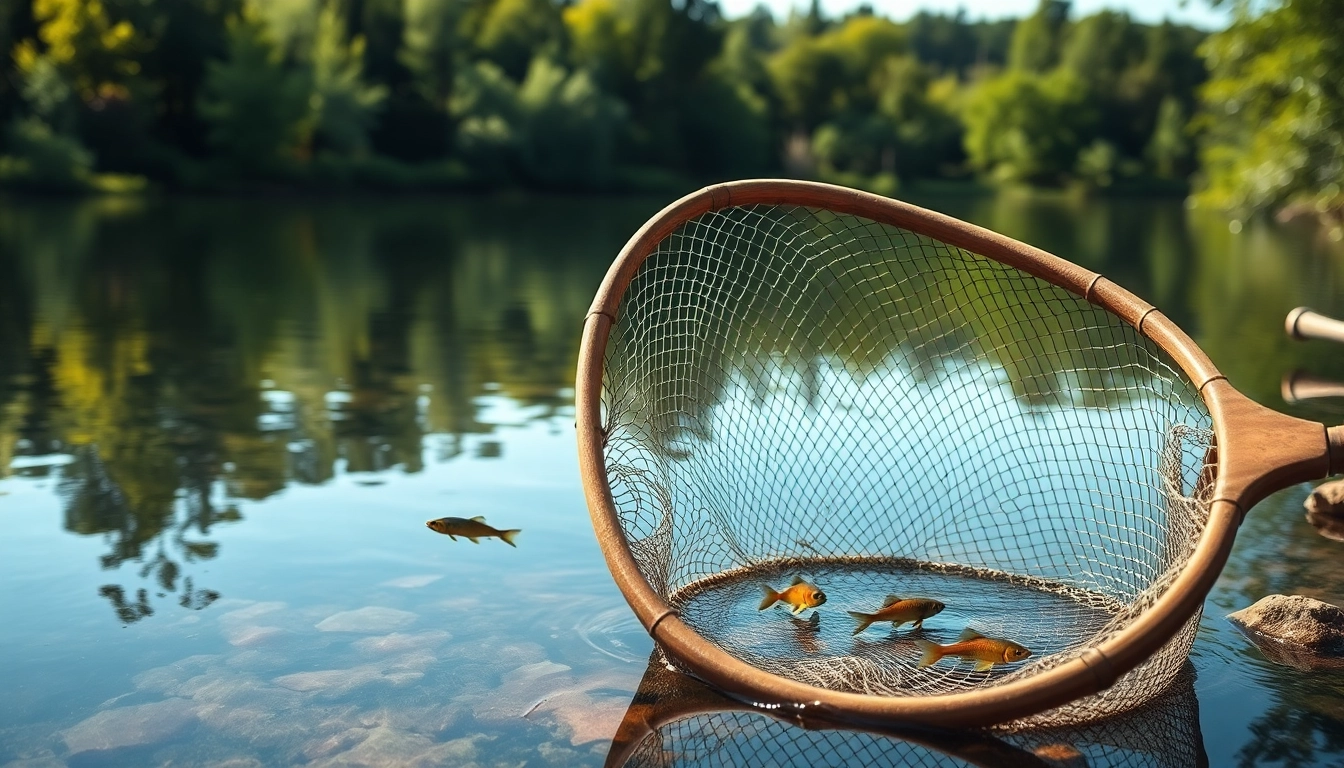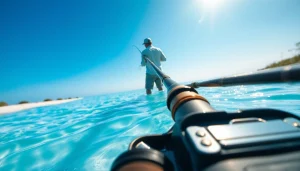Understanding the Importance of Fly Fishing Net
When it comes to fly fishing, every angler knows that a reliable Fly fishing net can make all the difference between a successful catch and a missed opportunity. A well-chosen net not only assists in landing fish efficiently but also plays a crucial role in ensuring the health of the caught fish, particularly if practicing catch-and-release techniques. Understanding why choosing the right net is significant is the first step in enhancing your overall fishing experience.
What Makes a Quality Fly Fishing Net?
A quality fly fishing net possesses particular characteristics that set it apart from a standard fishing net. First and foremost, it should be lightweight yet sturdy. This combination allows for easy maneuverability while keeping the net resilient against bends and breaks during use. The net’s material is also paramount; opting for rubberized mesh can prove beneficial for both your catch and the environment, as it minimizes fish injury and maximizes chances for survival after release.
Benefits of Using a Fly Fishing Net
The benefits of utilizing a fly fishing net are manifold. Having a net conveniently on hand allows you to land fish swiftly, reducing stress on the fish during combat. This minimizes the time a fish spends out of the water, which is vital for its survival. Moreover, a net increases your chances of landing fish, particularly larger specimens that may pose difficulty in hand landing. Additionally, a net helps maintain a safe distance between you and the fish, reducing the risk of injury during the catch.
Common Materials Used in Fly Fishing Nets
The materials used in constructing fly fishing nets vary significantly and can profoundly impact functionality. Below are common materials used:
- Wood: Provides a traditional aesthetic and durability, often used in handcrafted nets.
- Aluminum: Lightweight and resistant to corrosion, aluminum handles are favored for their strength.
- Carbon Fiber: Extremely lightweight yet strong, carbon fiber nets are perfect for those looking for premium gear.
- Rubberized Mesh: Enhances fish safety during catch-and-release, as it prevents the fish’s scales from getting damaged.
Types of Fly Fishing Net
Landing Nets vs. Catch-and-Release Nets
Understanding the distinction between landing nets and catch-and-release nets is key for anglers. Landing nets generally have a deeper bag designed to cradle fish effectively, making it easier to land heavier fish. These nets can encourage a more sporting approach when catching fish such as trout, bass, or larger species. In contrast, catch-and-release nets focus on fish health, featuring shallow bags made of rubberized mesh to minimize fish injury and promote a quicker recovery.
Frameless vs. Framed Fly Fishing Nets
Another key distinction is whether a fishing net is frameless or framed. Frameless nets feature a flexible design, making them particularly useful for navigating tighter spots or when transporting in confined spaces. In contrast, framed nets offer more structural integrity when handling larger fish, as they maintain their shape and depth consistently throughout the fight.
Choosing the Right Size for Your Fishing Style
Your fishing style dictates the optimal size for your fly fishing net. Smaller nets typically suffice for trout and panfish, while larger nets may be necessary for bigger predatory fish. Selecting the right size also promotes ease of storage and transport; therefore, always consider your usual fishing habitat and the species you target most frequently.
Features to Look for in a Fly Fishing Net
Rubberized Mesh and Its Benefits
The material of the netting should not be overlooked. Rubberized mesh is preferred due to its soft texture which minimizes fish injuries and allows for smooth removal of the fish once landed. This material also tends to be less prone to tangling, making it easier to use during the fishing process.
Handle Length Options
When considering a fly fishing net, the handle length is another significant consideration. Shorter handles are appropriate for wading in shallow waters, while longer handles allow for more versatility, particularly when fishing from a boat or along riverbanks. It is beneficial to test various sizes to find the one that best accommodates your typical fishing conditions.
Portability and Weight Considerations
Portability is essential for fly fishing enthusiasts who often traverse rugged terrains to find the best fishing spots. Lightweight nets made of materials like aluminum or carbon fiber lend themselves to easier travel without sacrificing functionality. Look for nets with collapsible designs or those that come with storage options to enhance transportability.
Maintenance and Care for Your Fly Fishing Net
Cleaning Methods for Different Materials
Regular maintenance ensures that your fly fishing net lasts for years to come. Cleaning methods depend on the materials used for your net:
- Wooden Nets: Clean with a damp cloth and periodically treat with a mineral oil to protect the finish.
- Aluminum and Carbon Fiber: Wipe down with soapy water and rinse completely to prevent corrosion.
- Rubberized Mesh: Rinse thoroughly to remove dirt or debris, allowing it to dry before storage to prevent mold.
Storage Tips to Ensure Longevity
Proper storage is vital to maintain the integrity of your fly fishing net. Always store in a cool, dry place to avoid moisture problems. Hanging your net to air out rather than leaving it folded prevents unwanted creases and prolongs its life.
Repairing Common Damages
Even with proper care, nets may experience wear and tear over time. Rubberized mesh may tear, and wooden frames can become warped. Most minor repairs can be made using a waterproof adhesive for mesh tears, and wooden frames may be sanded and resealed. Always consult your manufacturer’s recommendations for specific repair instructions to best care for your gear.
Frequently Asked Questions about Fly Fishing Net
How Do I Choose the Best Fly Fishing Net for Trout?
Choosing the best fly fishing net for trout involves considering the typical size of the fish you’re targeting. A net that is 20-25 inches long with a rubberized mesh bag is generally ideal for most trout sizes. Furthermore, ensure that the handle is comfortable and that the net is lightweight for easy handling.
What is the Best Way to Land Fish Using a Fly Fishing Net?
The best approach for landing fish using a fly fishing net includes slowly guiding the fish towards you to minimize panic. Use the net to scoop from underneath rather than trying to force the fish into the net, which can stress or injure the fish. Always ensure the net is wet before use as this minimizes friction and improves fish safety.
Why is a Rubberized Mesh Preferred Over a Traditional Net?
Rubberized mesh is preferred because it reduces the likelihood of damaging fish scales and fins, promoting a healthier environment for fish that are released back into the water post-catch. Furthermore, rubberized nets are less prone to snagging hooks, making them more user-friendly during fishing expeditions.


